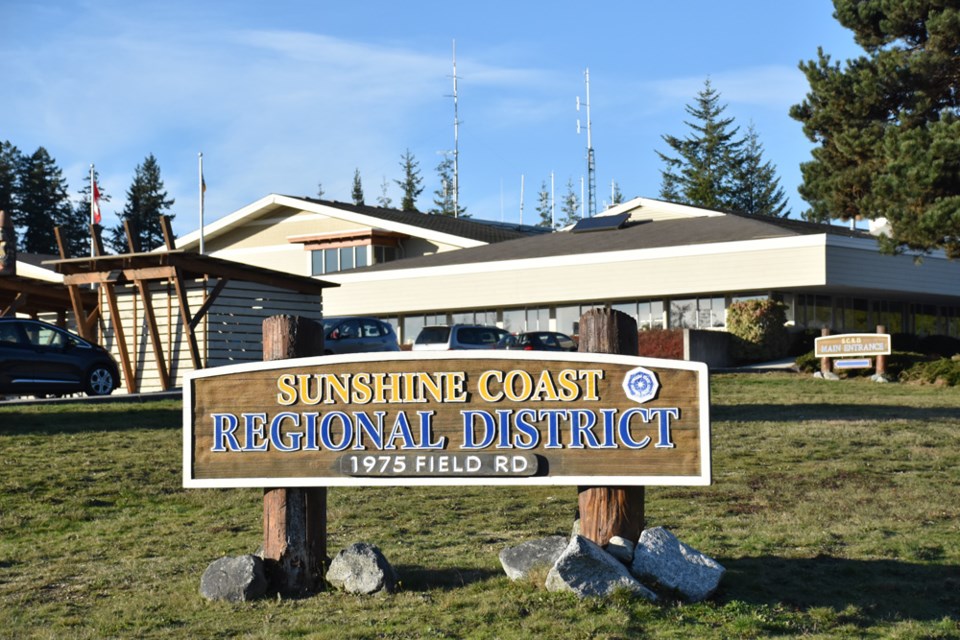Three changes to adopt minimum legislative requirements and address current professional geoscience guidance related to risks and impacts of flooding as well as sea level rise in Sunshine Coast Regional District (SCRD) zoning bylaws received committee support on Nov. 21.
A fourth bylaw update, to also include an extra five-metre no-development buffer near freshwater Streamside Protection and Enhancement Areas (SPEA) was not.
If the SCRD Board adopts those recommendations on Nov. 28, adjustments to building setbacks from the natural ocean boundary would double to 15 metres in Bylaw 337, which applies to the Egmont/Pender Harbour area. A change would also be made for that area, moving current setbacks from wetlands and creeks to a minimum of 17 metres, to comply with provincial Riparian Area Protection Regulation (RAPR) and be consistent with Zoning Bylaw 722. Both those changes were introduced in 2023 into Bylaw 722, which covers the other rural areas of the Coast.
In addition, the committee supported changes to parcel area calculations in both rural zoning bylaws to exclude the watercourse and SPEA from the minimum parcel area calculation for new subdivisions, to “align with the Riparian Areas Protection Regulation (RAPR) and enhance compliance,” according to a report on the committee meeting agenda. Those calculations determine minimum lot sizes, ensuring “that no child lots are created into undue hardship, while certifying RAPR compliance and promoting stronger riparian protection and improved environmental outcomes. Additionally, these changes support adherence to the federal Fisheries Act,” the report outlined
Rather than introducing the staff-suggested additional buffer to SPEA’s for all rural areas, the committee supported a motion by Elphinstone area director Donna McMahon that asked that “staff provide education for property owners around best practices for riparian setbacks." That recommendation is also on the agenda for the Nov. 28 board meeting.
Over 360 pages of public comments
“I keep coming up against community confusion about what this all means,” Area F director Kate Louise Stamford explained, stating she was looking to staff for communications strategies to better explain the bylaw adjustments.
Along with statements of support for the initiative, uncertainties and fears about how the proposals would impact rural property owners’ ability to develop lots they own were recorded in the minutes of the July 14 public hearing on the potential bylaw amendments. There were also 360 pages of written submissions to that hearing, several signed by more than one property owner, expressing concerns. A number of speakers at the hearing and those who provided comments in writing stated the changes were “unnecessary” and the process was “rushed."
In response to the concerns, Stamford stressed at the meeting that the SCRD can’t “sterilize a property” (make it impossible to build on) through zoning limitations. “We haven’t explained that” she asserted, noting that it was a concern she heard during the public engagement process.
Area D director Kelly Backs said how inclusion of all the proposed new zoning requirements could impact rebuilding of residences on narrow properties that contain watercourses, should a structure be destroyed by fire was a sticking point raised by some of his constituents. Staff noted that should any of new requirements create a hardship for proposed lot development or re-development, the variance process is available to owners to request encroachments into or relaxation of setback areas on a case-by-case basis.
At the committee meeting, staff acknowledged that even though the proposed amendments received first reading in June of last year, the reasons for and impacts of the changes are complex and a challenge for the public to fully understand. That situation continues, despite ongoing public engagement including a “Let’s Talk” page, Advisory Planning Commission reviews, an information meeting and a public hearing.
Staffer Jonathan Jackson also noted that adoption of the changes doesn’t mean the end of the review process. He said any updates will be monitored through their implementation. According to Jackson “we want to make sure we have it right, if there is something that isn’t working, we can amend and get it dialed in to meet the needs of the community."
Words missing in this article? Your adblocker might be preventing hyperlinked text from appearing.



